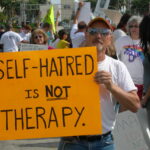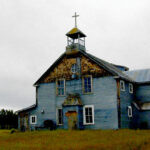Historical Essays
The Miracle of Forgiveness: The Rwandan Genocide, Thirty Years Later
Thirty years ago, on 7 April 1994, the Rwandan genocide began. Over the course of 100 days between April and July, armed Hutu militia members murdered 70% of the Tutsi minority—roughly 20% of the Rwandan population. An accurate number of the victims is difficult to determine, but somewhere between 600,000 and 800,000 people were butchered, most with machetes or rifles. In May, while the genocide was still underway and Tutsis were being systemically hunted down in fields, forests, and homes, the cover of Time magazine featured a single quote from a local missionary: “There are no devils left in Hell. They are all in Rwanda.”
The catalyst for the massacres came on April 6, when a plane carrying Hutu president Juvénal Habyarimana was shot down outside the Rwandan capital of Kigali. Habyarimana, a former military officer, had seized power in a 1973 coup and established a dictatorship. Hutus constituted the majority ethnic group at nearly 85% of the population; Tutsis were 14%. The previous year, Habyarimana had signed a peace deal to end the Rwandan Civil War, launched in 1990 by the Tutsi-led Rwandan Patriotic Front. Details of who ordered his assassination remain hotly contested, but his death left a power vacuum that was immediately filled by the extremist Hutu power movement.
Hutu extremists moved with stunning speed, calling on militias across the country to kill the Tutsi “cockroaches” and launching a bloody purge in the capital to eliminate the multi-ethnic moderate political Rwandan establishment. The prime minister, protected by an escort of Belgian soldiers, attempted to address the nation on Radio Rwanda; soldiers overwhelmed them and killed the prime minister, her husband, and later, the Belgians. That night, moderates including the president of the Constitutional Court, the minister of agriculture, and the leader of the Parti Liberal were among the dozens of assassinations.
By noon on April 7, the moderate political establishment had been decimated. By then, militias across the country had taken up the broadcasted calls to genocide, and the killings were underway in earnest. Increasingly frantic reports from journalists, UN workers, and other foreign observers on the ground warned the world of what was underway almost from the beginning. Within four weeks, the Red Cross was reporting death tolls of up to 200,000 and stated that it was impossible to keep count. Infamously, not a single country intervened.
Perhaps nowhere on earth—with the possible exception of Auschwitz—can the horror of historic genocide still be encountered so directly as in Rwanda. Several years ago, my wife and I travelled there to witness what had taken place. I was unprepared for the intimate nature of the evil we encountered there decades after the atrocities had ended.
We began at the Kigali Genocide Memorial, which is both a museum and a mass grave. Rows of gargantuan gray concrete slabs cover crypts containing the corpses of a quarter million Rwandans, with a black iron wall running alongside recording the names of the murdered. The dead are still being discovered and taken to national memorial sites for interment across the country; in 2019, bits and pieces of 84,437 people were laid to rest at the Nyanza Genocide Memorial, also in Kigali. One display described how it began:
Genocide was instant. Roadblocks sprang up right across the city with militia armed with one intent—to identify and kill Tutsis. At the same time, Interahamwe [Hutu militia] began house-to-house searches. The people on the death lists were the first to be visited and slaughtered in their own homes. The perpetrators had promised an apocalypse and the operation that emerged was a devastating frenzy of violence, bloodshed, and merciless killing. The murderers used machetes, clubs, guns and any blunt tool they could to inflict as much pain on their victims as possible. It was genocide from the first day. No Tutsi was exempt.
Women were beaten, raped, humiliated, abused, and ultimately murdered, often in the sight of their own families. Children watched as their parents were tortured, beaten, and killed in front of their eyes, before their small bodies were sliced, smashed, pulverised, and discarded. The elderly, the pride of Rwandan society, were despised, and mercilessly murdered in cold blood. Neighbors turned on neighbors, friends on friends … even family on their own family members.
Inside, exhibits featured videos of survivors talking in broken voices about what they had endured. Many had lost all their relatives. “I am the only one left of my father’s house,” said one woman. “My father … they cut him in two pieces to see if he really bleeds and threw him in the river.” Her little brother was killed by a blow to the head with a spiked club. A photo of a beautiful little girl looking at an aid worker with a bewildered expression caught my eye. A crimson slash ran down one side of her head where she’d been struck by a machete. More than 80% of Rwandan children lost a family member; 70% witnessed a family member being killed or injured; 90% thought they would be killed.
In the Children’s Room, a plaque hangs near the door: “In memory of our beautiful and beloved children, who should have been our future.” It is filled with the faces of the lost and short descriptions:
Ariane Umutoni, Age: 4, Favorite food: Cake, Favorite drink: Milk, Enjoyed: Singing and dancing, Behaviour: A neat little girl, Cause of death: Stabbed in her eyes and head
Fillette Uwase, Age: 2, Favorite toy: Doll, Favorite food: Rice and chips, Best friend: Her dad, Behaviour: A good girl, Cause of death: Smashed against a wall
Irene Umotoni: Age 6, Uwamwezi Umatoni: Age 7, Relationship: Sisters, Favorite toy: A doll they shared, Favorite food: Fresh fruit, Behavior: Daddy’s girls, Cause of death: A grenade thrown into their shower
One room featured rows upon rows of photographs, many submitted by family members of the slain. Some of their remains were piled in a dark, black hall directly adjacent: legbones stacked like cordwood; rows of brainless skulls, some cracked where the machetes made contact. A plaque nearby read: “If you knew me and you really knew yourself, you would not have killed me.” But it isn’t true: neighbors who knew each other did kill each other.
The Ntamara Genocide Memorial, a red brick Catholic church and collection of outbuildings, sits an hour outside of the capital. 5,000 people were slaughtered here on April 15, 1994. There were signs of ongoing construction when we arrived, and the guide—a young, pregnant woman named Chantel—informed us that they were presently working on “a new mass grave.” Inside the church, I counted 268 skulls stacked against the walls. Some were very small and had clearly once featured the faces of children. Many had holes bashed into them. There were also 51 coffins, covered in white shrouds with crosses on them.
Twelve large wooden boxes against the back wall, Chantal told us, were filled with “stray bones.” She pulled aside a blue tarp covering a pallet to reveal its contents, and my stomach surged: a jumbled pile of human parts including pelvic bones, fragments of a jaw, a small stray rib, a few spinal vertebrae. She pulled aside another tarp to reveal two layers of skulls. On one of the coffins lay a few rusty machetes and iron hooks that presumably matched some of the jagged holes smashed into the skulls. People still find bits of victims regularly and bring them to the Memorial, Chantal said. Her matter-of-fact air was jarring.
In a little building outside the church, where children had hidden from the Hutus, shelves still held yellowing textbooks and piles of ripped papers. They had expected to survive and return to school, so they had taken their homework with them. What had happened to them? Chantal led us behind the church into another brick building lined with short concrete pews where the children had attended Sunday school. She pointed to a large, dark patch on the brick wall at the back of the classroom, where a section of wall had been covered with congealed, stringy fluid that had hardened onto the brick. The stains were the brains of children who had been grabbed by the legs and smashed against the wall.
Of the 5,000 Rwandans who perished at Ntamara, only the names of 260 are known.
We made one final stop at a second church a half hour away, the Nyamata Genocide Memorial. 10,000 Tutsis died here on April 15, clinging to the hope that the walls of the church would protect them. More than 45,000 other victims are also buried in the mass graves lining the grounds. A young man named Stanley showed us into the large church. The cavernous interior was filled with piles of empty, bloody clothing, draped across the kneelers and scattered across the ground. Light filtered in through the roof where grenade fragments had pierced it, and there were black blood stains sprinkled across the ceiling. On the altar at the front lay a pile of prosthetic legs which had once belonged to the disabled, who had been carried into the sanctuary for safety. A pile of rusty machetes lay next to them.
Inside the sanctuary was the entrance to a crypt; it contained a glass case with 130 skulls, many of them cracked. Stanley showed us the difference between someone who had been chopped with a machete and someone who’d been bashed with a club. He pointed to a coffin deep in the crypt, lying under glass. It was covered in a shroud with a white cross. “The woman buried there was raped, like so many others,” he said. “Then the murderers thrust her from bottom to top with a spear. She lays here to testify of the many victims of sexual crimes during the genocide.” Rape, often perpetrated by known HIV-positive males, was a widespread weapon of the genocide; Hutu women married to Tutsis were raped as punishment. Between 250,000 and 500,000 women and girls were raped.
Outside the church in the suddenly searing sunshine, Stanley led us to another crypt. I walked down the stairs and was seized with dread. Along both walls, stretching back as far into the darkness as the eye could see, were stacks and stacks of thousands upon thousands of skulls. Empty eyes, glittering teeth, deathly silence. Their black sightless stares, simultaneously directionless and strangely accusing, were unlike anything I have ever experienced. The tightly packed ghosts made the space suffocating, and I lasted only minutes before escaping back to the day. We asked Stanley, who smiled widely to every question he was asked, how his family had fared in 1994. He was 16 when the genocide began. His whole family was murdered. Some of his aunts and cousins are buried here. It used to be hard to work here, he said, but he was used to it now. He smiled again.
After three memorials, we could stomach no more. There are more than 250 genocide memorials in Rwanda. On the way back to Kigali, it began to rain. The blood-red dirt clumped and ran in rivulets to the gutters, giving everything an eerie look.
READ THE REST OF THIS ESSAY HERE








